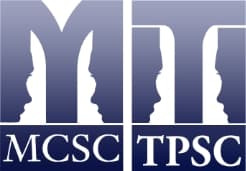Famous actress and humanitarian Angelina Jolie has made the very brave decision to undergo bilateral mastectomies to prevent breast cancer, and has opted for a reconstructive procedure. As many of you probably know by now, she carries a gene that is present in some women with a family history of breast cancer, and in women of Ashkenazi Jewish heritage. This gene confers a very high risk of breast and ovarian cancer. What are the choices for Angelina, and millions of women like her who, either due to a cancer diagnosis, or for prevention, have undergone breast removal?
There are two main methods of creating new breasts:
- The first uses the patient’s own tissue, typically from the abdomen, but sometimes from the back, and rarely thigh or buttock, to fashion a new breast, the so called “autologous” method.
- The second involves placement of a breast implant, after the skin over the chest is gradually stretched by a tissue expander.
Autologous Breast Reconstruction
The autologous method is usually the choice in women who require radiation. This is because the skin over the chest is often affected by radiation, rendering it too fragile and tight to allow simple tissue expansion. A “flap” of tissue is moved over from the abdomen, back, thigh or buttock, to the chest wall. This usually involves moving skin and muscle for the covering of the breast. If the individual is not too thin, with an abdominal flap, fat is also moved to make up the substance of the breast. However, flaps that involve only skin and fat, without muscle, are also sometimes used, which can result in a shorter recovery time. In thin women , and in cases when a flap from the back is used, there is not enough fat, and a breast implant is necessary.
Although the length and complexity of the surgery varies depending on the type of flap, these are generally big surgeries, several hours long, with a significant recovery time. When the nipple has also been removed, another short procedure a few months later to fashion a nipple, either with the patient’s tissue or with tattooing, is required. Nipple sparing procedures (which was what Ms. Jolie chose to have) are sometimes an option, but are seldom done by Canadian breast surgeons, because of the residual 5% risk of cancer.
Advantages of Autologous Breast Reconstruction
- Results in a natural looking and feeling breast
- When an abdominal flap is used, patients benefit from a tummy tuck
Tissue Expander Reconstruction
When there has not been radiation, as in Angelina Jolie’s case, a tissue expander can be used. This involves an hour long surgery to place a gradually expandable implant, called a tissue expander, beneath the skin and muscle of the chest wall. This is then gradually inflated with fluid over a 6 to 12 week period. Then, several months later after the skin has stretched to accommodate, a second procedure is done to place a more permanent breast implant. Finally, a third procedure, again some months afterward, may be required to fashion a nipple. To undergo this type of reconstruction, a woman must have enough residual skin and muscle to cover the implant.
Advantages of Tissue Expander Method
- Requires a shorter surgery with less blood loss
- Because this method does not require moving large flaps of muscle, recovery times after these procedures is generally shorter.
As an experienced plastic surgeon in Toronto, I recommend that any woman thinking about breast reconstruction seek out a surgeon experienced specifically with these types of surgeries as they can be complex. Whatever Ms. Jolie decides, she is applauded for being a role model of grace and poise in a very trying time, and for casting light on an important genetic condition for which screening is readily available.


Leave a Reply